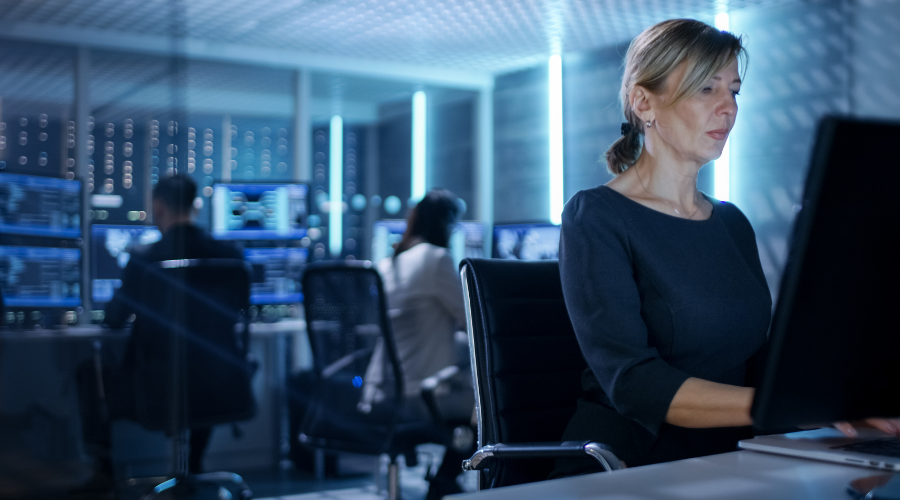3 Ways Police Use Video Surveillance Analytics

Next-Level Intelligence
The evolving nature of video surveillance continues to change the game when it comes to investigations. Decades ago, the introduction of traditional video surveillance had a positive impact on the way law enforcement conducted investigations by giving officers evidence captured in real-time versus unreliable eyewitness accounts. And now video analytics is taking that evidence to the next level. While police departments have no shortage of incidents to investigate, they often lack enough manpower to investigate them all as fast as they would like, and that is where video surveillance analytics comes in.
Three specific ways police are using video surveillance analytics to support critical everyday law enforcement are:
- Accelerating investigations with forensic investigation features like facial and license plate recognition
- Building trust in public safety and policing through data-driven community policing initiatives
- Improving community safety and infrastructure efficiency by analyzing traffic patterns
Read on to discover more about how video analytics supports these key law enforcement needs.
Accelerate post-incident investigations
Police departments need to resolve investigations as quickly and accurately as possible to achieve a positive outcome. Traditionally, manual video review is a crucial part of the investigative process, but video analytics technology reduces the need for manual review. Law enforcement can process video data with video analytics to identify, classify, and index objects in video footage like cars, trucks, buses, motorcycles, bicycles, women, men, children, and animals. As a result, video analysis can greatly decrease the amount of time it takes to review video evidence from hours and days to just minutes and seconds while simultaneously reducing human error.
Facial and license plate recognition are great examples of video analytics that help security and police officers accelerate investigations. Officers, or operators in a real-time crime center, can configure alerts to notify them of the presence of a pre-determined object, like a person, in real-time or while reviewing video following an incident. For example, investigators can create a watchlist by adding an image of a known suspect or inputting other identifying criteria, such gender and clothing type or color. An alert can then be configured to notify investigators whenever a face matching the known image or the combination of identifying features is detected on camera in real-time or during post-incident review of the video. Likewise, license plate recognition in video surveillance technology can be used to quickly notify police in real-time when there is a match to a suspect’s car or plates on a traffic camera. Upon receiving the alert officers can take the necessary action to deploy resources to the area.
Building Trust through Community Policing
Video surveillance is critical to keeping our communities safe. Cities and towns use surveillance and traffic cameras for forensic investigation and often partner with private businesses who use video surveillance for additional evidence when needed. In recent years, personal video doorbells and other home surveillance systems have become increasingly popular at private residences, giving law enforcement the ability to partner with their communities while adding another valuable video source for investigative analysis.
When permission is granted, private business or home video surveillance can be used in several ways, such as tracking and finding missing persons or identifying suspects. For example, footage can help police track down a suspect who abducted a child from a neighborhood or identify the perpetrator in a string of robberies. Layering a video analytics platform on top of video evidence can help investigators quickly comb through hours of video and hone in on key elements of their investigation.
This partnership between residents and businesses and the local public safety authorities is the bedrock of Community Policing. This important strategy encourages closer cooperation between police and community members to prevent crimes, accelerate investigations, and improve quality of life for constituents. Whether through dedicated mobile apps to deepen communication or sourcing video evidence to be analyzed for investigations, police can engage with the people in their jurisdiction to build trust and cooperate on initiatives that keep everyone healthy, safe and comfortable.
Traffic safety & efficiency
While video intelligence is incredibly useful in investigating criminal activity, it is also beneficial in uncovering traffic patterns and trends to support cities that function better for residents and visitors. This information offers city planners and first responders a way to collect quantitative data and attain situational awareness and is crucial to keeping motorists and pedestrians safe.
To best protect drivers and pedestrians, urban planners and law enforcement need to identify the time and location of traffic hotspots. Knowing where and when traffic congestion occurs is the key to helping law enforcement mitigate collisions or congestion.
Video intelligence can be used to display heatmaps indicating high-traffic areas for both drivers and pedestrians. This information can be used to trigger alerts that deploy law enforcement to proactively address swells in traffic, mitigate potential hazards or accidents, and ensure smooth transit throughout the city. In the long term, this information can be used by city planners to reconfigure and optimize traffic patterns to be safer and more efficient.
For more information on how video surveillance analytics can support your policing efforts, schedule a demo with one of our BriefCam experts!
Editor’s Note: This post was originally published in January 2022, and has been refreshed and updated for accuracy.
Signup to receive a monthly blog digest.
